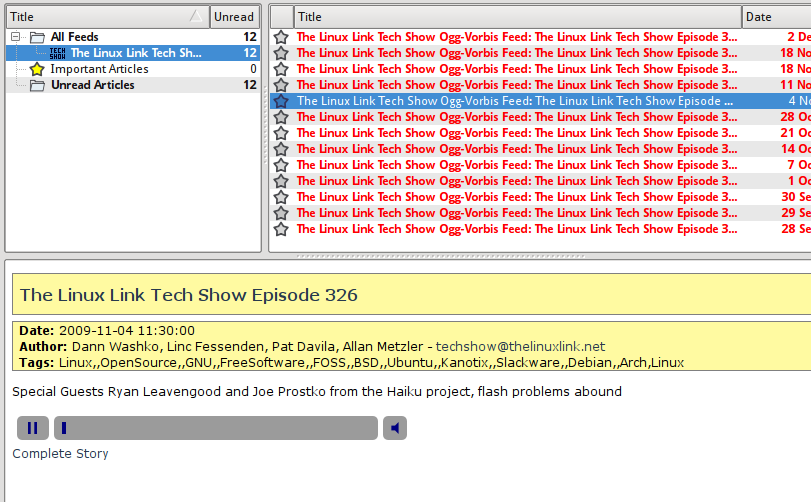New 24-hour app coming (not so) soon: foley
First a short explanation:
24-hour apps are small, self-contained projects where I intend to create a decent, useful application in 24 hours. The concept is that:
I will think about this app a lot for a while
I will design it in my head or in written notes
I will code, from scratch, for 24 hours.
That's not one day, really, but 24 hours of work. I can't work 24 hours straight anymore.
The last time around this didn't quite work as I intended, but it was fun and educational (for me at least ;-) and the resulting app is really not bad!
So, what's foley going to be? A note-taking app aimed at students and conference public.
In your last geeky conference, did you notice everyone is using a computer?
And what are they taking notes on? Vi? Kwrite? OpenOffice? Whatever it is they use, it's not meant to be used for this purpose.
So, what will foley do different? I don't quite know yet, but I have some ideas:
A strong timeline orientation. Every paragraph will be dated.
Twitter/Identica support. Want to liveblog your notes? Just click.
-
Multimedia incorporated in the timeline.
Webcam/Audio recording synced to your notes?
Images imported and added in the timeline?
Attach files to the timeline? (Useful for slides?)
If provided with a PDF of slides, attach each slide to the right moment in the timeline
Easy web publishing: find a way to put this on a webpage easy and quick (single-click publishing is the goal)
I have only thought about this for about 10 minutes, but I see potential here.
The bad news is... I have a ton of paying work to do. So this will probably only happen in January. However, I wanted to post it so I can take input while in this planning phase.
So, any ideas?
